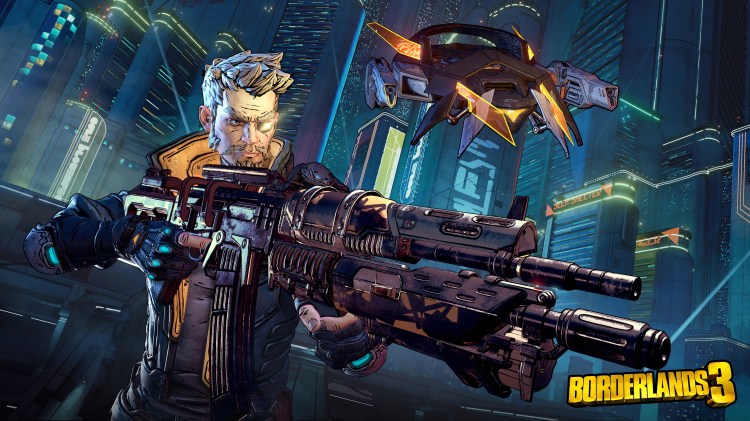One of the annual highlights at the Electronic Entertainment Expo (E3) is interviewing Strauss Zelnick, the CEO of Take-Two Interactive, the publisher of games such as Rockstar’s Red Dead Redemption 2 and the upcoming Borderlands 3.
Zelnick is always very efficient and direct with his answers. This year, he was terse in some parts of our conversation and gave lengthy answers at times. It is always fascinating to see which questions get him engaged.
Last year, Zelnick had a lot to celebrate, as Red Dead Redemption 2, which Take-Two’s label Rockstar Games worked on for seven years, debuted with an average Metacritic rating of 97 out of 100, and it sold tens of millions of copies. This year, Take-Two will publish Gearbox Software’s Borderlands 3.
Zelnick is ultimately responsible for some of the biggest studios and the biggest games of all time, and his goal is to be the most creative, innovative, and efficient company in gaming. Take-Two has 20 studios and more than 5,000 people. Of the 20, Rockstar has eight locations, while 2K has 11 and the mobile game publisher Social Point has one. Take-Two’s Private Division label is also signing up third-party games to publish under an independent gaming brand. Take-Two had about $2.6 billion in revenue in the past fiscal year, thanks to Red Dead.
June 5th: The AI Audit in NYC
Join us next week in NYC to engage with top executive leaders, delving into strategies for auditing AI models to ensure fairness, optimal performance, and ethical compliance across diverse organizations. Secure your attendance for this exclusive invite-only event.
We talked about a wide range of topics, including working with mercurial game designers, Borderlands 3, Red Dead Redemption 2, esports, the publishers who pulled out of E3, cloud gaming, game subscriptions, Red Dead Online, and the Leisure Economy.
Here’s an edited transcript of our interview.
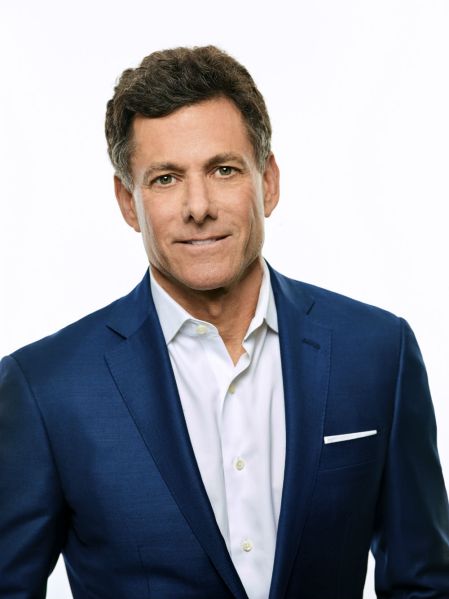
Above: Strauss Zelnick is CEO of Take-Two Interactive.
GamesBeat: Borderlands 3 looks like a pretty interesting release for this year.
Strauss Zelnick: I’m excited about it. I think we all are.
GamesBeat: Is that the reason you got a bigger booth this year?
Zelnick: It is. We have 100 gameplay stations out there. Lots of room for people to engage. There’s still a big line out there.
GamesBeat: Are you adjusting to the fact that fans are now a bigger part of the show?
Zelnick: No, it’s because we have something big to show. The last two years, we had a corporate booth because we weren’t really showing anything.
GamesBeat: That franchise seems to have grown over time — the awareness of it, the fan expectations. It’s interesting to see that the third time around, there’s more excitement.
Zelnick: I think it varies very much with the quality of the title. The word is out that it’s a great game. The engagement on Borderlands 2 is still incredibly strong. Millions of people are playing that actively. The series itself has sold 43 million units. It’s a vibrant community. They’re really passionate. This game, more so than any of our others, has a huge cosplay community as well. People love to dress up as the characters. The excitement is real.

Above: Don’t mess with Lilith.
GamesBeat: What is the interaction with Gearbox like for you?
Zelnick: It’s always good.
GamesBeat: Randy Pitchford had a big blowup on Twitter [with Game Informer] when it was announced. Is that any of your concern?
Zelnick: Look. Gearbox is an entity that’s independent of Take-Two. We’re supportive of our partners. It’s a different company, and so they have their own approach.
GamesBeat: It reminded me a bit that talent and creativity and creative people are always interesting. Sometimes unpredictable. That’s the way this industry is. There are still a lot of interesting people.
Zelnick: Most creative industries have interesting people.
GamesBeat: But that doesn’t seem to faze you, that there’s an unpredictability here.
Zelnick: No. I’ve had the great pleasure of working with incredibly creative and talented people for my entire career. It’s probably the thing I love doing most.
GamesBeat: Is it like working in Hollywood with talented people?
Zelnick: It’s definitely different. There are certain elements of similarity, but each business is different. I started in television, and then I went to motion pictures, home entertainment, and video games. A long time ago, music, other forms of software, and other businesses in entertainment as well. Each business has its meaningful differences. But there’s a thread of similarity in trying to recruit, retain, and motivate top-tier talent.
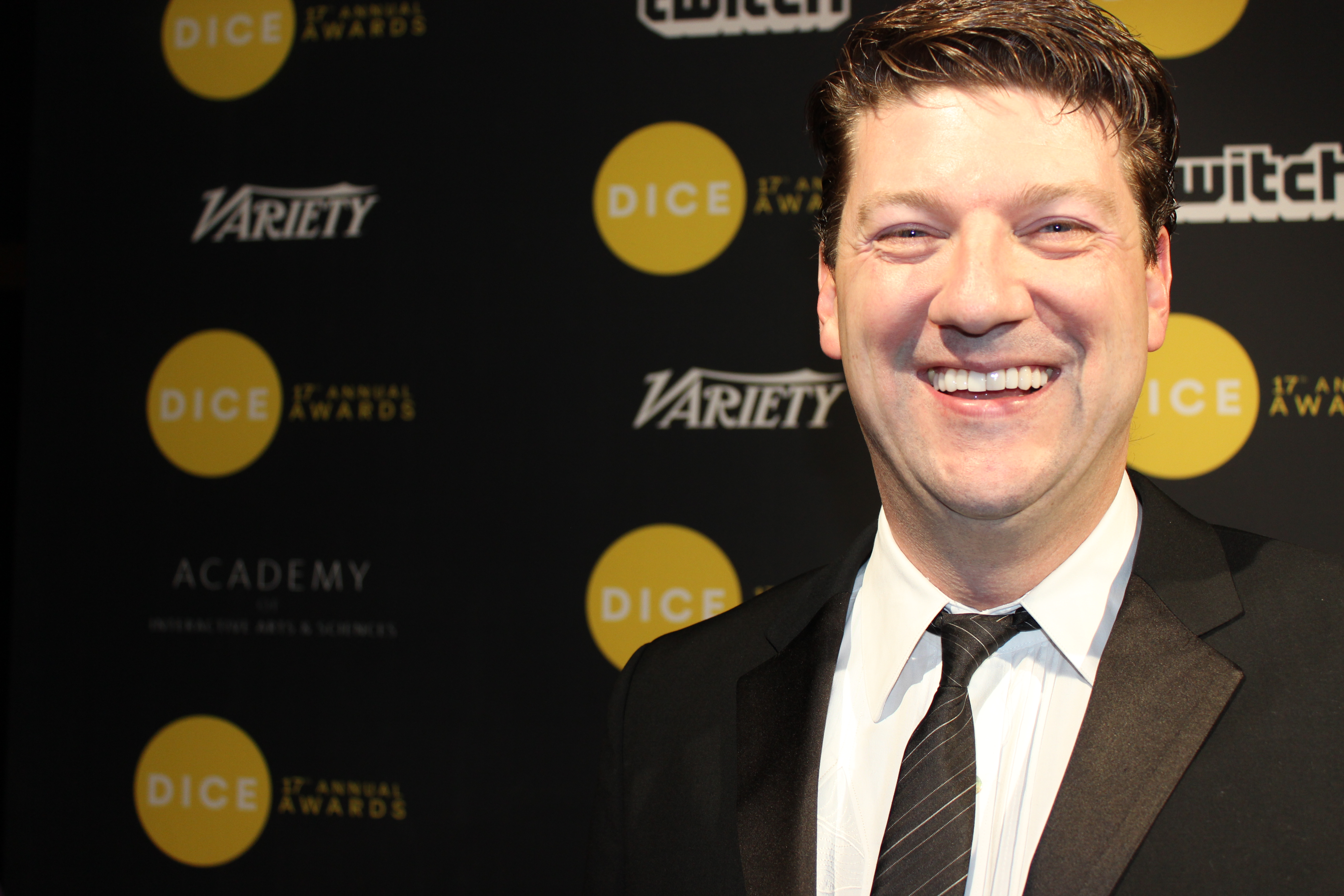
Above: Randy Pitchford of Gearbox Software uses … colorful language.
GamesBeat: How to keep them inspired, so they stick around?
Zelnick: I’m not sure I inspire anyone. But to not only encourage people to pursue what they’re passionate about, but to insist upon it. To make sure we make choices here at Take-Two that enable people to think — not only a little bit different than others, but in a way that innovation carries the day, always carries the day.
All big hits are by their nature unexpected. They’re never derivative. We have a lot of big hits here, and the reason we have big hits is that we surprise and captivate and excite our consumers. If they fully expect what they’re going to see, you can’t do that. You can do okay, but you can’t really create something massive. We’re looking to create something massive every time. We don’t always succeed, but that’s our goal.
GamesBeat: Some people in the media tried to interpret what Red Dead Redemption 2’s development cycle meant, and I’m curious about what you think. Do you think it means every game now has to shoot for this massive amount of content, a massive team working for many years? It seems like the sort of thing that would scare a lot of people out of the business.
Zelnick: I think entry barriers are going up, but I’m not sure anyone, including ourselves, believes that every big release has to have a massive team or have more than 100 hours of gameplay. There’s room for any number of different games, from casual smartphone games all the way to Grand Theft Auto, and plenty in between. The commonality that’s required is enormous attention to quality. Quality means something different a smartphone title than it does a free-to-play PC game in China, and that’s different from a huge triple-A action release for consoles, and that’s different than a free-to-play mid-core game.
GamesBeat: When I was talking to different people about that, there was one person who said that Rockstar took the approach of trying to develop a procedural world [in one part of the game, according to Rockstar], and decided that didn’t really work. They went back to a more structured, narrative-driven game. That’s a huge experiment to run. It reflects something that probably no other game developer would try to do. They went down a long path, tore it up, and went back. Does that make you pull your hair out?
Zelnick: Nothing makes me pull my hair out.

Above: Red Dead Online gets a major overhaul.
GamesBeat: A lot of people might want to do that in this business, but very few can afford it.
Zelnick: We’re disciplined folks. We’re certainly not cavalier with our shareholders’ money. That said, we do try to support our folks’ creative vision. Sometimes we’ve had to regroup and head down a different path, although that’s rare.
GamesBeat: I talked with [former Sledehammer Games co-CEO] Michael Condrey when he signed on with 2K. It’s interesting that you grabbed that particular talent. That’s a big investment for you.
Zelnick: I hope so. He’s talented. He’s brought over a lot of great people so far.
GamesBeat: How do you see that opportunity? Is that an opportunity to add more new IP, or to grab a particular talented team or individual?
Zelnick: Obviously our goal is always to make a great video game. We wouldn’t bring over a team unless we had that vision for them. We always want to work with the best and brightest talent in all capacities in our company. We think Michael is phenomenally talented, and we think he’ll build a great game.
GamesBeat: At this point, do you have a good idea what will come out of it?
Zelnick: I’d say it’s still early days. We have some sense of it. But it’s very early.

Above: John Marston was the hero of Red Dead Redemption, and he is back in Red Dead Redemption 2. Is he a vanishing breed?
GamesBeat: Did you ever think that Silicon Valley might not be the place to do this anymore, since it’s such a high-cost area?
Zelnick: We’ve definitely thought about the possibility of opening another geographic location. We have many already. It’s less a cost issue than a talent issue. It’s a very competitive area.
GamesBeat: [Hangar 13 has that structure]. Is that another way to deal with that?
Zelnick: That would be one way to avail yourself of talent, but then you’re managing multiple locations. It’s complicated. We do it, but it’s complicated.
GamesBeat: Last year you made a joke about how big Ubisoft was. They’re now 16,000 people, which I think is [2,000] more than a year ago. I don’t know how that happens. They still have less revenue [at $1.9 billion] than Take-Two (at $2.6 billion for the period ending March 31, 2019). It’s interesting to think about where all the manpower goes in big companies.
Zelnick: We have 5,000 people. We did just shy of $3 billion in net bookings last year. We told the market we expect to do $2.5 to $2.6 billion this year. But look, one of our stated strategies is to be the most efficient business in the industry. We probably are, given our scale.
GamesBeat: Do some of them start to resemble something more like Rockstar?
Zelnick: I think Rockstar stands alone. 2K is pretty big too, though.

Above: Red Dead Redemption 2 stars Arthur Morgan (left) and gang leader Dutch Van Der Linde.
GamesBeat: But working on many different games.
Zelnick: Yes.
GamesBeat: How is your satisfaction with Red Dead Online, where it is and where it’s going?
Zelnick: It’s early days, but I’m happy with what they have. I think the content drops are promising. There’s more to come, obviously. I feel good about it, and I think most everyone does.
GamesBeat: Is GTA Online on a different path, or very similar?
Zelnick: Its metrics are on a better path so far, but it’s a very different title, as it should be. It’ll find its own course.
GamesBeat: How do you adapt to something like battle royale?
Zelnick: One does not have to adapt to battle royale. It’s a mechanic we’ve used before. It’s a mechanic we use now. It’s a game mechanic. There’s nothing to adapt to.
GamesBeat: I talked to Laura Miele at Electronic Arts this week. An interesting thing she said was that when Respawn worked on Apex Legends, they were playing and iterating on this game on a daily basis for almost 18 months. They were able to do it because it was a very tightly focused game, whereas Anthem, over five to seven years, had so many systems that it had to come together at the very end, and probably could have used more time. You don’t find a lot of problems until it all comes together. Is there an argument to made for that kind of super-rapid prototyping model?
Zelnick: I think most companies engage in that.

Above: Grand Theft Auto V
GamesBeat: Firaxis seems to do a lot of that.
Zelnick: It’s pretty typical.
GamesBeat: Red Dead seems more like Anthem, though. A collection of systems all finally coming together when everyone finishes their work.
Zelnick: I wouldn’t put those two in the same category. I wouldn’t compare the two titles at all.
GamesBeat: I wouldn’t compare them, but the way you find out whether it works or not seems to only happen at the end.
Zelnick: I would say we’ve never been surprised in that situation.
GamesBeat: But you don’t then decide, okay, once the systems are put together, how much more time does this need to become a good game?
Zelnick: There have been times, as you know, when we’ve delayed a title. But it wasn’t based on flying blind and suddenly lifting the covers and realizing we need more time. It’s more of an ongoing development process where, ultimately, everyone felt it would benefit from more time.

Above: Borderlands 3 at E3 2019.
GamesBeat: How do you feel about esports now? We had that Kotaku story recently that gave off some very negative vibes about esports and how there’s too much hype behind it, with not enough money being made.
Zelnick: I’ve been pretty plain on that topic. I wouldn’t put it that way, but I have said that the total market is about $1 billion. Most of that goes to League of Legends, a title we don’t own. There are other successful titles like DOTA and Overwatch, but by and large it’s a League of Legends business. We’re proud of how the NBA2K league is doing. We’re in our second season and viewership is up. We have great sponsors. We feel good about it. But it’s undoubtedly early days.
There’s a lot of viewership. 250 million people watch esports, 125 million of them avidly. We have no doubt that there’s a meaningful business there. It is early days. It’ll take a while to catch up. They develop organically. Relative to professional sports, there’s only eight or 10 sports that matter. There are a lot of people that are positive that there are going to be dozens if not hundreds of esports games that people tune in for, and that’s probably not realistic. It may end up being more akin to the real sports world, where you’ll have between eight and a dozen games that really matter to an audience and attract significant viewership.
Also, the notion that esports, in effect, is a mode of play, and you can just create a game — I think people tend not to remember that a lot of games that became great esports games were first great games in and of themselves. People enjoyed playing them. They were multiplayer modes that gave birth to the reason they exist as an esports game. It’s hard to say that you’re just going to make an esports experience and people are going to tune in. It’s not necessarily a matter of, if you build it and they will come.

Above: Stadia is the plural of stadium, in case you were wondering.
GamesBeat: What do you think about Stadia?
Zelnick: I think it’s exciting. We’ll have to see how it works live with multiple people in multiple places on multiple devices, but I’m excited.
GamesBeat: Yves Guillemot was saying that that’s the way you get to 5 billion gamers, because it lowers the price of entry to gaming.
Zelnick: I’m not sure why broader distribution changes the entry price necessarily. I do think that broader distribution might make a difference for free-to-play titles that have no entry price. It costs money to support those titles. That could be a mixed blessing. I think the answer is — I maybe wouldn’t necessarily expect to see 5 billion gamers. That’s a lot of people out of the 7 billion on earth, since a lot of those people are either really little or really old. But the audience will certainly grow with broader distribution. That’s always what happens.
GamesBeat: Triple-A, if it gets exposed to more people, do you think it gets a larger slice of everyone’s time compared to something like mobile gaming?
Zelnick: I don’t know. If you’re prepared to pay a premium price and you want a triple-A game, aren’t you also prepared to buy a console? You’re making the assumption that somehow there was a limitation that doesn’t exist to buy the software, but does exist to buy the hardware. That’s, generally speaking, not the case. Again, I think it’s more likely than not that the big win will be in free-to-play, more so than in high-end expensive frontline titles. That’s not supporting us, in that view, because we put out a lot of high-end expensive titles, but I think that may be more relevant. I think that remains to be seen.
GamesBeat: Do you think we’ll reach subscription fatigue soon?
Zelnick: It’s a great question. I think the average American household wants to subscribe to two to three entertainment properties at a time, of all sorts. There will be no winner takes all, and a bunch of losers, in linear programming as well as interactive. Interactive programming isn’t particularly well-suited to a subscription, because you typically only play a couple of titles at a time, and you play them for a long time. I’m not sure what subscriptions bring. But we’ll see, because obviously some people are going to launch them, and Game Pass is already out there.
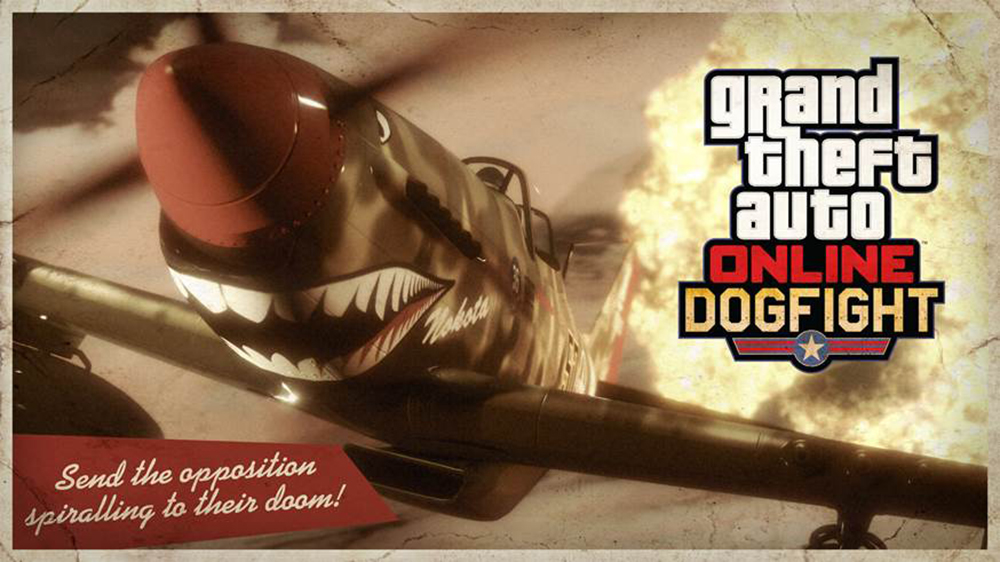
Above: GTA Online is getting some WWII flavor.
GamesBeat: If cloud gaming does bring us an ability for titles to go anywhere, on PC and mobile and console, do you think that triple-A titles could essentially replace the titles on mobile?
Zelnick: Again, triple-A titles aren’t available on the same terms. It depends on the consumer, and there are different consumers. Mobile consumers tend to be older, tend to skew female. Console consumers tend to be somewhat younger and tend to skew male.
In addition to that, just the utilitarian experience in and of itself — a triple-A game on some platforms might look pretty, but the controls are going to be wonky. The user interface — it’s more than just whether you can bring it there. It’s whether you can bring it in a way such that users have a comparable experience.

Above: Developers working on Apple Arcade games.
GamesBeat: I thought there are some interesting disruptions that could happen here. If Stadia launches and gets a lot of good games on mobile, you could have people playing triple-A games on top of Apple’s platform without paying Apple any money. I’m not sure if Apple would be happy about that prospect.
Zelnick: There are plenty of things that go on on and Apple device for which Apple doesn’t get paid. They don’t get paid for all games. You can do stuff on your Apple device for which Apple does not get paid.
GamesBeat: I would guess, though, that that’s why they’re doing their own subscription service for games.
Zelnick: Perhaps it’s responsive, but it may just be proactive. I think their approach is challenged.
GamesBeat: Subscription fatigue again?
Zelnick: No, it’s not even that. I indicated earlier that it’s not clear subscriptions even make sense for interactive entertainment. Ultimately a powerful offering presumably has to bring the highest quality product from an array of distributors. So far Apple’s approach has been wholly owned product from Apple. That’s really hard to do. That would be like launching the iTunes store with only music owned by Apple. That’s incredibly challenging.
GamesBeat: What is your own approach for cross play and whether you want that?
Zelnick: It’s a good thing. It will happen.
GamesBeat: Because players are demanding it?
Zelnick: Absolutely.
GamesBeat: The age of the platform exclusive, do you think that’s going away? Even first parties like Microsoft–
Zelnick: The whole system opens over time. But it hasn’t yet.
GamesBeat: How do you feel about the future of E3 and the new leadership at ESA?
Zelnick: It’s early still. I think Stan’s going to do a great job. He already is doing a great job.
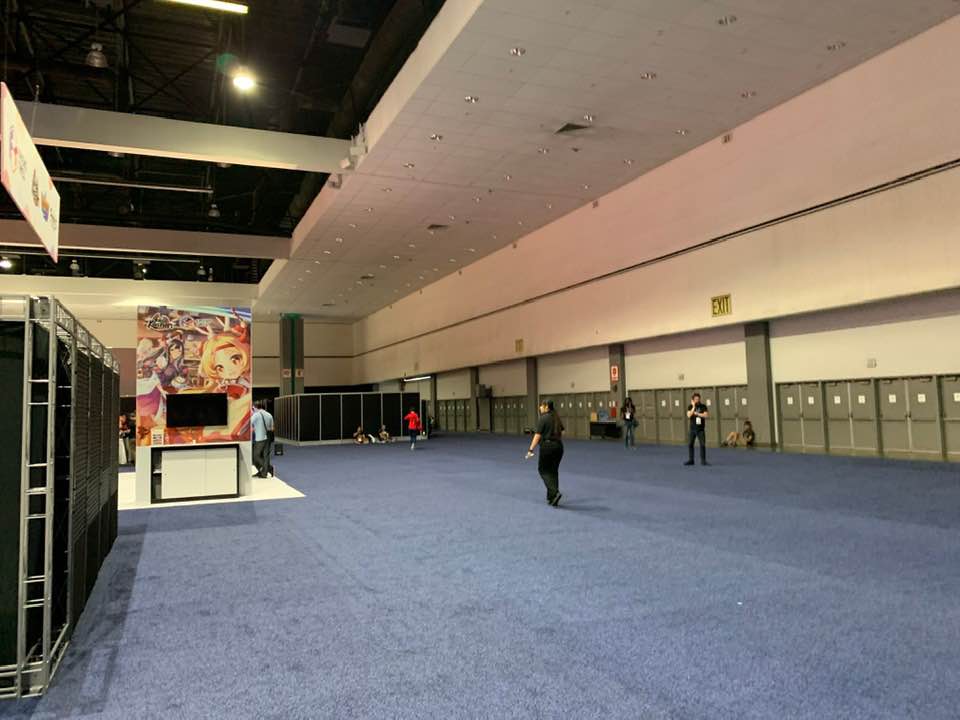
Above: E3’s show floor was thinner than usual, thanks to Sony’s withdrawal.
GamesBeat: The West Hall [of the Los Angeles Convention Center] seems to be a bit of a problem right now. Do you think that’s temporary, or do you think it’s a sign that the show needs more rethinking?
Zelnick: I think it would be great if all the key industry participants also participated in the show. It troubles me that they do not. I think they’re missing out on something. I don’t just see being here on the show floor as supporting the ESA, but it is supporting the ESA. Primarily it’s a great exposure opportunity for us, to consumers, distributors, retailers, analysts, investors, and press. We value it. Every year we take a look at what it cost and what we got out of it, and it seems to make sense for us. But even if it didn’t necessarily make sense, we would want to support the ESA. I’m personally disappointed that not all of my industry peers see it the same way. I think over time they’ll come to the view that it’s important to have a presence here. I think we’re going to get a lot of benefit out of it this year.
GamesBeat: Expanding is not necessarily because you’re being nice to the ESA. It’s because Borderlands 3 is here.
Zelnick: We try to be nice to everyone. However, our big push this year is Borderlands 3.
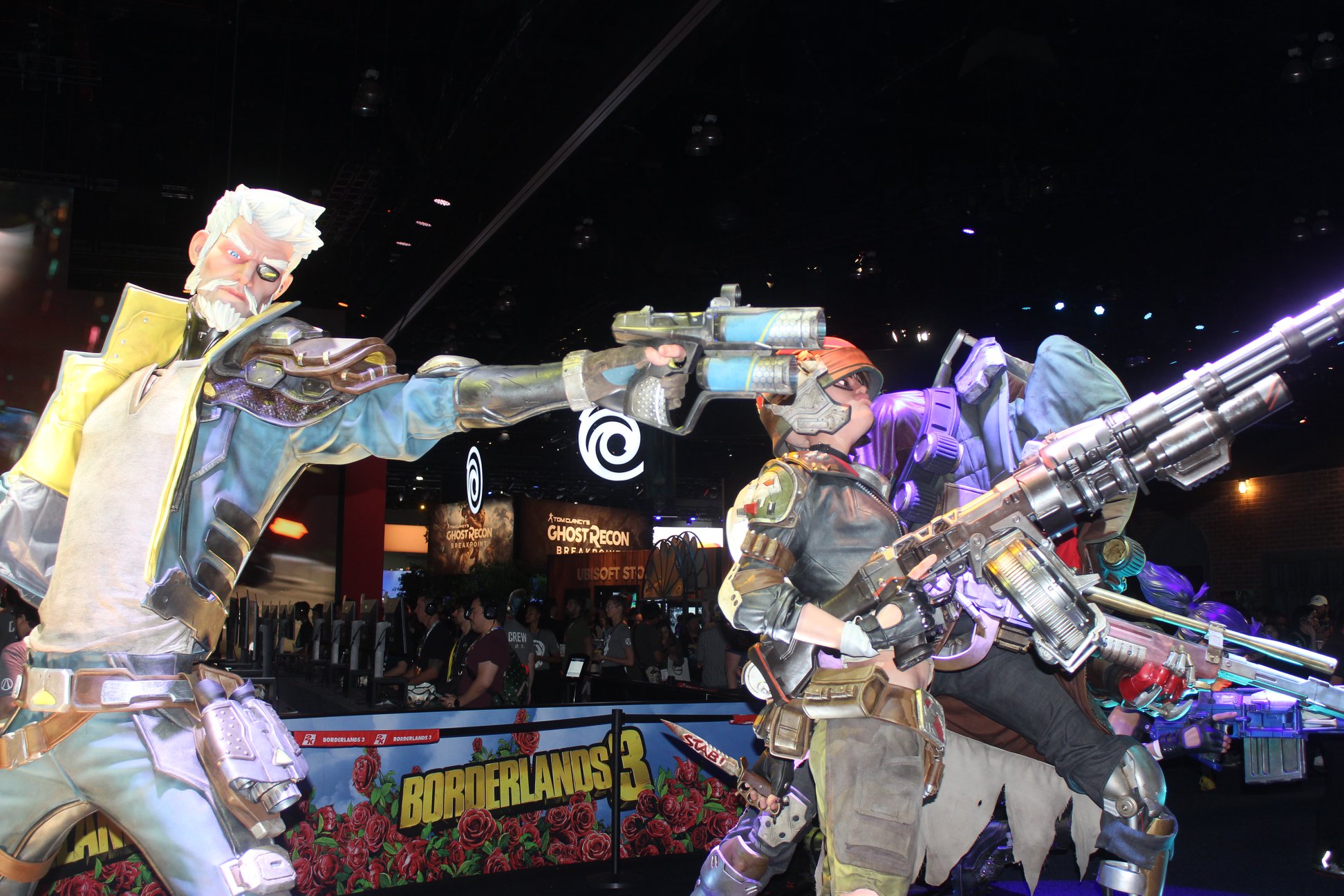
Above: Borderlands 3 booth at E3 2019.
GamesBeat: As far as game-related jobs in the world, where do you think the growth happens? I’ve been interested this idea of a Leisure Economy, where streamers and esports athletes are getting paid to play games, and the idea that a lot of jobs that exist in gaming now didn’t actually exist five or 10 years ago. What do you think is going to be interesting about the game economy and the jobs related to it?
Zelnick: There are numerous industry tailwinds. That means we expect our revenues and our profits to go up, as long as we execute. All those tailwinds also increase employment. I agree that there are certain jobs — the notion that you could get paid to play video games because people want to watch you play them and talk while you do would have been a hysterical notion 10 years ago, and now it’s a real business. What does that look like in 10 years? I can’t say. Do I think the business will still be growing and dynamic in 10 years? I do.
